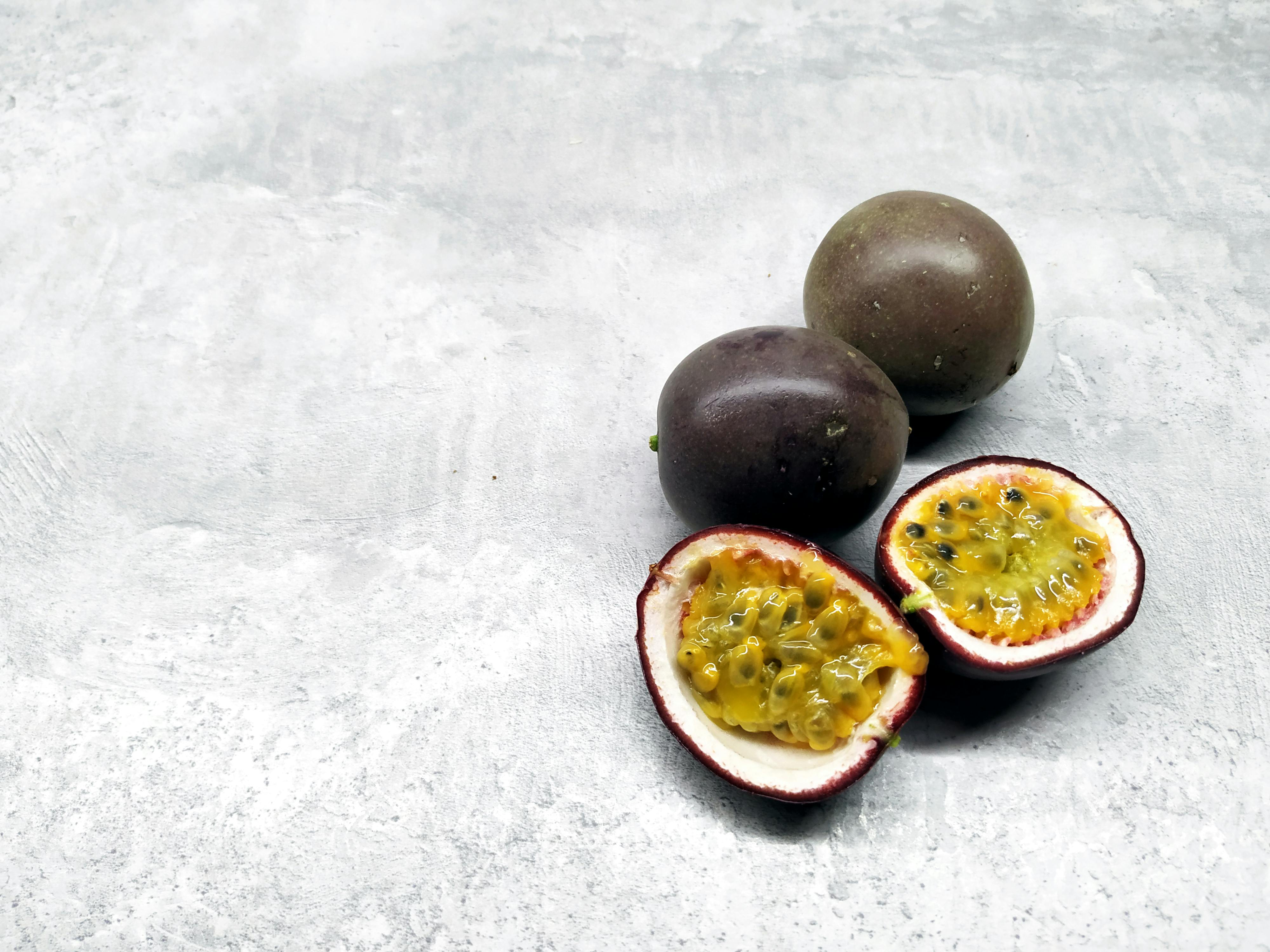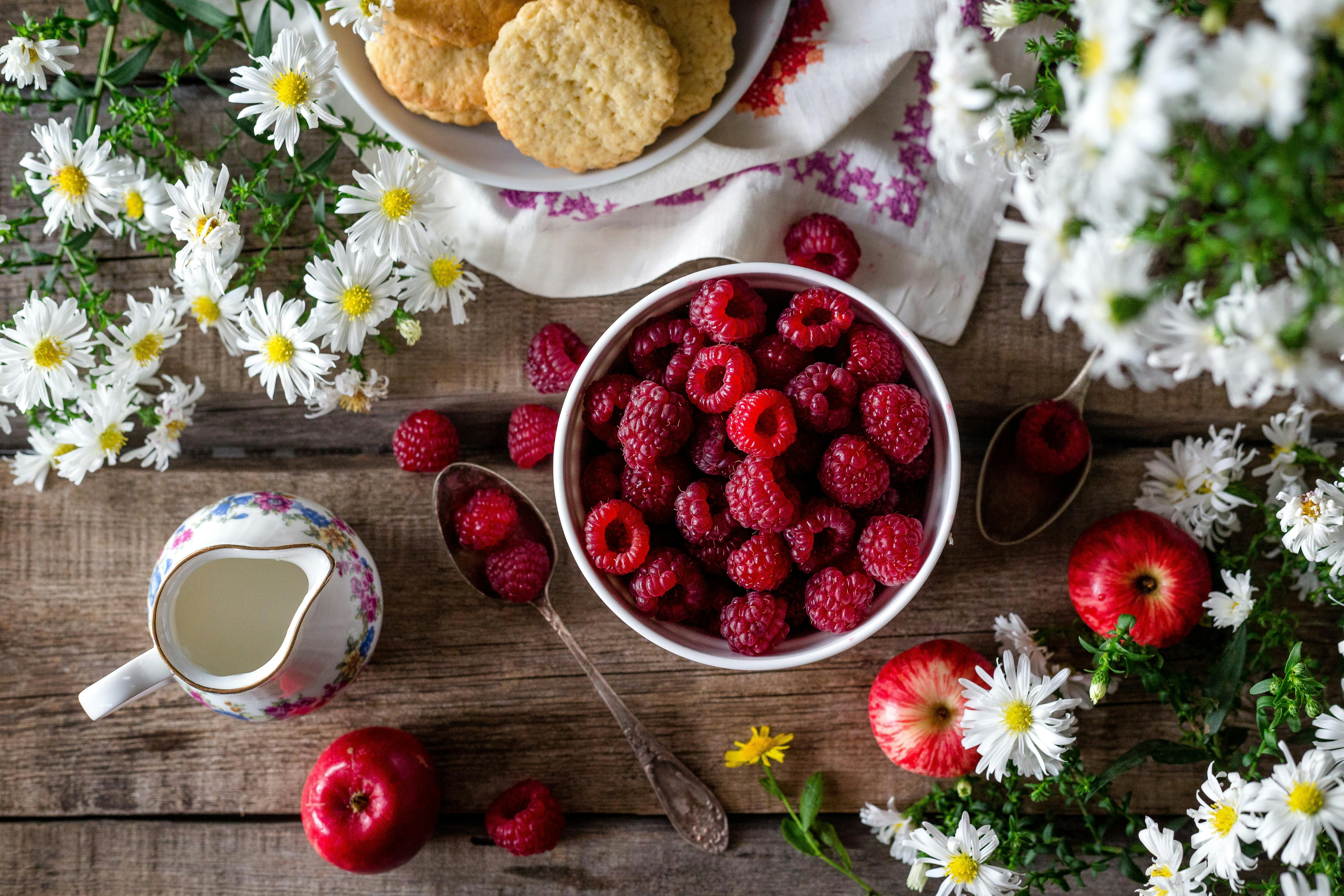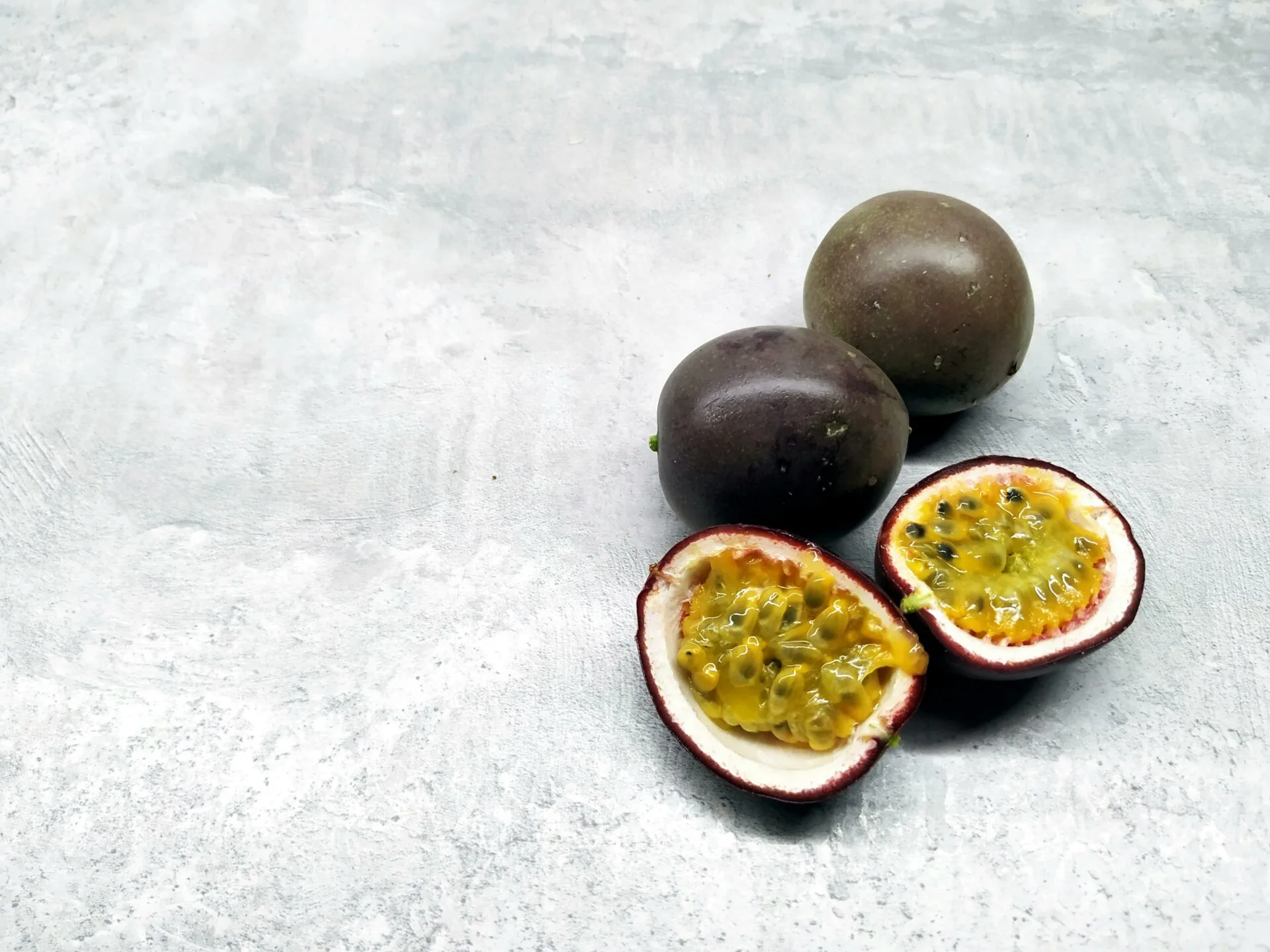Passion fruit is a delicious, juicy and fragrant fruit that is native to South America. It has a unique flavor and can be eaten raw or used in various recipes. While passion fruits are available throughout the year, the peak season for these fruits is usually between May and August. So when are passion fruits ripe? Knowing when to pick passion fruits is essential to getting the best flavor and nutrition out of them. In this article, we will discuss how to tell when passion fruits are ripe, as well as the benefits of eating them.Passion fruits are ripe when they have a deep, purple-brown skin and the fruit gives slightly to pressure. The fruit should be heavy for its size and have a sweet, fragrant aroma.
How to Identify When Passion Fruits are Ripe
Passion fruits are a tropical fruit that grow on vines, and are known for their tart, sweet flavor. They can be used in a variety of ways, including eaten raw, juiced or added to desserts. Knowing when passion fruits are ripe is key to getting the best flavor out of them. Here are some tips on how to identify when passion fruits are ripe and ready to be eaten.
The first thing you should look for is the color of the fruit. Passion fruits come in a variety of colors, from yellow to purple. When they’re ripe, the skin should be deep in color and slightly soft to the touch. If you squeeze the fruit and it gives slightly, then it’s likely ripe. Another sign of ripeness is when the skin starts to wrinkle or crack slightly.
The next thing you should look for is the aroma. When passion fruits reach their peak ripeness, they will give off a sweet smell that is similar to pineapple or grapefruit. This is a sure sign that they are ready to be eaten.
Finally, you can also tell when passion fruits are ripe by tasting them. The flesh should be sweet and tart with little to no bitterness. If it tastes too bitter or sour, then it’s not quite ready yet.
Overall, knowing how to identify when passion fruits are ripe can help you get the most out of your harvest. By looking for signs like color changes, aromas and taste testing you can easily determine which ones are ready for eating!
What are the Signs of a Ripe Passion Fruit?
Passion fruit is a delicious and nutritious tropical fruit. It has a sweet and tart flavor, making it a popular addition to both sweet and savory dishes. But how can you tell when passion fruit is ripe and ready to be eaten? There are several signs you can look for to determine when your passion fruit is ripe.
The first sign of a ripe passion fruit is its color. The skin should be deep purple in color with some yellow tones. The darker the color, the riper the fruit will be. Another sign of ripeness is the texture of the skin; it should feel slightly soft to the touch but still firm. If it feels too soft, then it may be overripe.
The aroma of passion fruit can also indicate ripeness. When ripe, passion fruits have a strong, sweet smell that is unmistakable. When you sniff your passion fruits, you should immediately recognize its signature scent.
Finally, one of the most reliable ways to tell if your passion fruit is ripe is by gently squeezing it in your hand. If you feel some give in the fruit that indicates that it’s ready to eat. If you don’t feel any give or if it’s too squishy then it’s likely overripe and not ideal for eating raw or adding to recipes.
In summary, look for dark purple skin with yellow tones, a slightly soft texture yet still firm when touched, a strong sweet smell and some give when lightly squeezed as signs that your passion fruit is ripe and ready to eat!
How to Tell if a Passion Fruit is Ripe
Passion fruit is a delicious, sweet-tart fruit that is available in many parts of the world. It has a unique flavor and is often used in desserts and other recipes. Knowing how to tell if a passion fruit is ripe can help you get the best possible flavor from your fruit. Here are some tips on how to tell if a passion fruit is ripe:
The first thing to look for when determining ripeness in passion fruit is color. Ripe passion fruits will be deep yellow or purple in color, depending on the variety. If the passion fruit has any green areas, it is not yet ripe.
Another way to tell if a passion fruit is ripe is by gently pressing it with your finger. A ripe passion fruit should have some give when you press it with your finger, but it should not be overly soft or mushy. If the skin feels too soft, it may be past its peak ripeness and not as flavorful as one that has been picked at just the right time.
Finally, smell can also help determine ripeness in passion fruit. A ripe passion fruit will have a sweet and slightly tangy aroma that will fill your nose when you open it up. If there isn’t much of an aroma coming from the inside of the fruit, then it may not be quite ready yet.
Knowing how to tell if a passion fruit is ripe can help ensure that you get maximum flavor and enjoyment from this delicious treat! Next time you go shopping for passion fruits, use these tips to pick out ones that are perfectly ripe for maximum enjoyment!
Techniques for Determining when Passion Fruits are Ripe
Passion fruits are a delicious and nutritious treat that can be enjoyed in many different ways. But how do you know when they are ripe and ready to eat? Here are some techniques for determining when passion fruits have reached their peak ripeness and flavor.
The first way to tell if a passion fruit is ripe is by its color. When the skin of the fruit turns from green to yellow-orange, it is usually ready to eat. Another way to tell if a passion fruit is ripe is by squeezing it gently. If it gives slightly without feeling too hard, then it’s likely ripe and ready to be eaten.
The aroma of a passion fruit can also indicate its ripeness. Ripe fruits will have a sweet, fragrant smell that can be detected when the skin is broken open or when the fruit is cut open. Finally, tapping or thumping the passion fruit can give clues about its ripeness as well. A ripe fruit should sound hollow when lightly tapped on the side.
These techniques can help you determine when your passion fruits are ripe and ready for eating. Enjoy them fresh, or use them in recipes for an extra sweet and tangy flavor!

Is There a Best Time to Pick a Passion Fruit?
Passion fruit is a sweet and juicy tropical fruit that packs a powerful punch of flavor. It can be used in a variety of dishes, from salads to desserts, and makes an excellent addition to any meal. But when is the best time to pick a passion fruit?
The best time to pick passion fruit varies, depending on the variety and the climate where it’s grown. In general, most passion fruits are ready for harvest when their shells turn yellow or orange. The interior of the fruit should be soft and sweet-smelling when ripe. Unripe fruits will be hard and have an unpleasant odor.
In warmer climates, passion fruits can ripen quickly – sometimes within just a few days! In cooler climates, it may take up to two weeks for the fruit to ripen properly. To determine if your passion fruit is ripe, simply pick one off the vine and give it a gentle squeeze. If it’s soft and has a sweet smell, it’s ready for harvest.
It’s important to note that overripe passion fruits won’t have the same flavor or texture as those that are perfectly ripe. Overripe fruits may be mushy or have black spots on their shells – these should be avoided as they won’t taste as good.
Picking passion fruits at just the right time can make all the difference in terms of flavor and texture – so make sure you take your time! With some patience and practice, you’ll soon become an expert at finding perfectly ripe passion fruits every time!
What Color Indicates that a Passion Fruit is Ripe?
When it comes to passion fruit, the color of the fruit is an important indicator of ripeness. As passion fruit matures, its outer skin changes from green to a deep yellow or purple color. When the passion fruit turns a deep purple or yellow color, it is ready to be eaten. The skin should be slightly soft to the touch and feel firm but not hard. If the passion fruit is still green, it may not be ripe yet and may need more time to ripen indoors or outdoors.
The color can vary depending on the variety of passion fruit you have. For example, some varieties will turn a dark yellow or orange when ripe while others will remain purple even when fully ripe. To make sure that your passion fruit is ripe and ready for eating, examine its color closely and give it a slight squeeze with your fingers. If it feels firm but slightly soft, then you can be sure that your passion fruit is ready for eating!
It’s also important to note that although a bright yellow or purple color indicates ripeness in many varieties of passion fruit, some varieties such as the Purple Granadilla will remain green even when fully ripe. In these cases, you should look for other indicators of ripeness such as wrinkling or softening of the skin instead of relying solely on color. Once you have identified that your passion fruit is ripe and ready for eating, you can enjoy its sweet flavor and nutrition!
Should I Harvest My Passion Fruits Early or Late?
Harvesting passion fruits can be tricky and knowing the right time to pick them is important. Generally, passion fruits are ripe when they turn yellow, or orange, and develop a wrinkled appearance. However, there are various factors to consider when harvesting passion fruits.
The ideal time for harvesting depends on the variety of fruit you have in your garden. If you have a sweet variety, such as the purple granadilla or yellow banana passionfruit, you can harvest it once it has turned yellow and starts to soften. The fruit should still feel firm when squeezed gently. If you’re harvesting a tart variety such as the red or white granadilla, leave the fruit on the vine until it is soft and wrinkled before picking it.
In some cases, you may not be able to wait until the fruit is fully ripe before harvesting it. In that case, harvest your passion fruits early and let them ripen off the vine by storing them at room temperature for a few days until they reach their peak flavor. If you harvest too late and let them overripen on the vine, they will become mushy and their flavor will be affected negatively.
To ensure maximum flavor when harvesting your passion fruits, look out for any signs of mold or rot on the vine before picking them. Additionally, avoid picking up bruised or damaged fruits as these will not keep well after being picked. With these tips in mind, you can ensure that your passion fruits are harvested at just the right time for optimal flavor!

Conclusion
Passion fruits are a nutritious and delicious fruit with many benefits. They have a unique flavor that can be enjoyed in a variety of ways. The ripeness of passion fruits can vary widely, but usually occurs when the fruit is soft and has brown patches on its rind. When buying passion fruits, select those that have an even color and are slightly soft to the touch.
The best way to ensure that passion fruits are ripe is to look for fruits with brown patches on their rinds and feel for softness. Ripe passion fruits can be eaten as-is or used in a variety of recipes, from healthy smoothies to sweet desserts.
In summary, passion fruits are an excellent source of nutrition and flavor that can be enjoyed in many different ways. To ensure that they are ripe, look for those with brown patches on the rind and feel for softness. Enjoy them fresh or incorporate them into your favorite recipes!



